The Palace: East Ham Theatre with a special place in my heart
The Palace was the last surviving theatre in East Ham, enduring The Blitz and lasting half a century after its creation.
The theatre – and what was built on its site after it closed – has a special place in my heart.
That’s where I went to work every day for nearly 40 years, first as a trainee reporter and working my way up to become Editor of the Newham Recorder. Our offices were above the landmark C&A building, which replaced the theatre.
It was built in 1906 and was designed by architects Wylson and Long, who also designed the Tottenham Palace of Varieties, the Alhambra Theatre in Blackpool and The Empire in Bristol.
I can personally testify that the foundations in particular were built to last as I was on duty every weekend and when C&A left leaving us cut off upstairs. I had the keys to the building. And when it was turned into Lidl, as it now is, the demolition teams working underneath us at the Recorder broke many diamond drill bits on their huge machines trying to knock it down. They also cut off our heating by mistake!
East Ham Palace became part of the VTC Circuit, which stood for Variety Consolidated Theatres. Film shows formed part of the variety programme from the early days. Located adjacent to East Ham Railway and Tube Station, the Palace Theatre of Varieties had its entrance on the corner of High Street North and Burges Road, where the Recorder famously did too.
It opened in December 1906, and was operated by United Variety Theatres Syndicate, who also operated other ‘Palace’ theatres in Walthamstow, Tottenham, Euston and Chelsea. Bioscope film shows formed part of the variety programme from the early days. In 1933, the theatre was purchased by Victor Sheridan and converted into a full-time cinema, known as the New Regal Palace Cinema, which opened in September that year.
But competition in East Ham was fierce, with several large capacity cinemas already operating and more were soon to follow. The New Regal Palace Cinema closed in December 1935, and it reverted back to live variety as the Regal Palace Theatre. Films were still played on Sundays, when live performances were prohibited by law. Variety certainly was the spice of life for locals in East Ham at the Palace.
An example is the programme on offer in April 1947 which included Stephane Grapelly, described as the ‘world’s greatest swing violinist’ and the great Max Miller, the immensely popular but extremely risqué comedian, arguably the most famous act to appear there.
Comedian Jimmy Jones said he will “never forget” his first visit to East Ham Palace.
“My dad took me on the bus from Dagenham when I was ten. I was thrilled but when we got there they woudn’t let me in because I was too young. But my dad insisted and said that Max himself had given us the tickets. We went round the corner to Burges Road and went backstage. Top of the bill that night was Max, the front of cloth comedian who would do his patter while the stage was re-arranged behind the curtains. Max greeted my father warmly and said: ‘Albert, do you want him to see me?’ He said that he didn’t see anything wrong with Max so Max said, “he can come backstage with me and you can go outside and see the show.”
“And so I got to see the greatest comedian of all time perform from the wings. I remember some of the jokes to this day – and use some of them in my act.
“Like the deaf and dumb man who got married and his wife made him wear gloves in bed to stop him talking in his sleep. Jimmy said: “That night at East Ham Palace was pure magic. He was flamboyant, outrageous and sensational., in a dazzling silk suit, plus fours, kipper tie and white shoes. He’d say to the converted: “I know what you’re thinking.”
One of the first celebrity interviews in the 1970s I did at the Recorder was with one of the nation’s sweethearts East Ham’s very own Noele Gordon, who was the start of the massively popular soap opera Crossroads, playing motel owner Meg Richardson, later Mortimer, from 1964 to 1981.
Noele, so called because she was born on Christmas Day in East Ham 1919, told me how she made her stage debut at the East Ham Palace. It was fair to say I was star struck, having watched Noele as a youngster in a lunchtime series called Lunchbox, which ran for over 2,000 episodes. She went to convent school in Forest Gate and was immensely proud of her Cockney roots.
She was taught to dance by Maude Wells and later spent several years living in Southend. She made her first public appearance at the East Ham Palace aged two and a half, singing a song called Dear Little Jammy Face with her face covered in jam! She went to RADA and was credited as the first woman to be seen on colour TV.
The Palace also saw East Ham’s own Vera Lynn, now Dame Vera, give one of her first performances.
I also found out a family secret while researching this piece. According to my dad, my nanny Emily’s brother Reggie Wright, dated Vera for a while in his early 20s, but sadly they didn’t meet much again after that. I wish I’d known that when I interviewed her in the 70s, 80s and 90s.
The Palace also holds special memories for talented Newham entertainer Bunty Murtagh, who was part of the Mission Belles group that kept us entertained in East Ham and Manor Park in the 70s, 80s and 90s.
Bunty, from East Ham, sang at The Palace as a child with her brother Bernard, and managed to find a great picture for us of her on stage there. She said: “It sums up the way we were. There are the The Brown Twins on the left then me and then Bernard who always stole the show. Our older brother John and Alan Brown were signed with Brian Mickey and sang in harmony. Dad was half of a double comedy act Hannaway and Brown. Mum joined in when any of us featured. She accompanied on the piano all dressed up bless her.”
Her mother also had another role at The Palace. She used to be one of the vitally important cleaners in the mornings!
“Remembering mum in overalls and turban in the mornings and taffeta in the evenings. You’ve stirred up so many memories Colin.” The girls went on to become The Intruders group and then the Mission Belles, as they are remembered to generations of adoring fans. Pride of place in Bunty’s cuttings collection is a poster from the then East Ham Recorder in 1964 which said: “Beatles’ latest rivals -and they’re girls!”
Before the days of Max and Noele and our Vera, in the 1900s, the famous escapoligist Harry Houdini, was at East Ham Palace Theater Broadside. He appeared with vaudeville and other entertainers.
The Palace also staged boxing matches in the 1910s. One local who did not want to be named, told me her grandfather, who is now 95 fought there.
Roy Fox was an American band leader who moved to England in 1930 and included the more famous Al Bowlly as vocalist with one of his bands. They appeared in 1948 along with the Grip Quartet alongside 12 polar bears. There was also a foot Juggler Taro Naito.
A variety programme for the East Ham Palace just after the war in October 1946 included Gale & Pat Ross, Bijou & Freda, Jack Anton, Erikson, Peter Waring, Walton’s Marionettes, Don Carlos, Hatton & Manners.
Another for August 1950 included on the bill The Windsorettes, Syd Jackson, The Harmaniacs, Fayne & Evans, Dorothy Ward, Percy Rich & Eva, Grace Mars, Harry Secombe, and The Krazy Komedy Kirks.
The shows eventually got mixed with films. And the theatre’s reputation also became a bit seedy for a time, as they featured what were called ‘tit and bum shows!’ The ladies on stage were not allowed to move!
Replying to a request for other memories of The Palace Joseph Hunt said he saw Laurel and Hardy there. “And the heartthrobs of the time, Sam Browne and Elsie Caryle, and of course Jane of the Daily Mirror and with her dog and feathers.” Michael Giddens said: “I remember a troop of girls doing tricks on large balls, walking up big ramps across the stage.” Linda Bartell said: “I remember it well as we say in the ‘gods’. The seat was so high up I was holding onto it in case I fell off.” Phyllis Underwood said the Palace did stage topless shows.
The Palace finally closed in June 1956, when TV was really hitting live variety theatres and picture houses hard. It was demolished in 1958 and a C&A clothing store was built on the site. For many years C&A was the focal point for East Ham for shoppers. Throughout the 60s, 70s, 80s and 90s, it was THE place to buy your clothes for all the family.
The Newham Recorder had moved into the offices above C&A in 1970, two years after the paper was launched. It celebrates 50 years of existence this year.
The store closed in 2008 – and our heating in the Recorder office went with it – when demolition and renovation teams mistakenly cut off and smashed up our gas supply. Our staff worked in incredibly trying conditions and myself and the news editor came in at 6am each day to light temporary gas fires. Then the demolition noise became a major problem, but we soldiered on.
In 2009, the building became a Lidl supermarket. I played a part in that handover and had the keys to the building as prospective buyers were looking around. I also spent a four -day Bank Holiday weekend there after our toilets flooded and helped the Dyno-Rod man clear the blockage! We hired luxury toilets which were there for two weeks in the old C&A car park while it was sorted out. They were so good the staff wanted to keep them!
Today, memorabilia like old programmes from the shows is still available to buy on Amazon, ebay and other internet specialist sites.
But it forever has a special place Back In The Day of East Ham’s history.
Pictures: Colin Grainger, Newham Archives and Local Studies Library, Bunty Murtagh
The Back In The Day Feature appears in the community magazine, EastEdge, which is available in Newham.
The magazine covers a variety of issues. Details of where to get it and how you can advertise in it can be found here:
https://www.eastedgemag.com/
You can follow them on Twitter:
You can also follow me on Twitter or Facebook:
https://www.facebook.com/colin.grainger.18

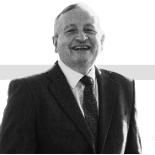
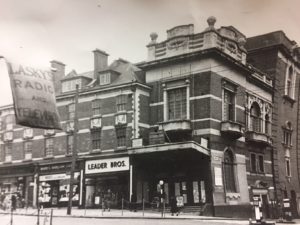
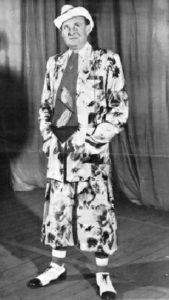
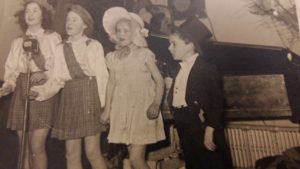
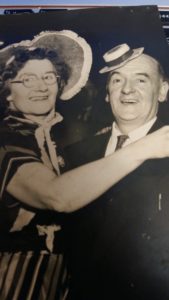
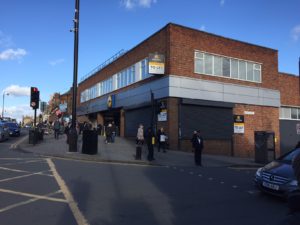
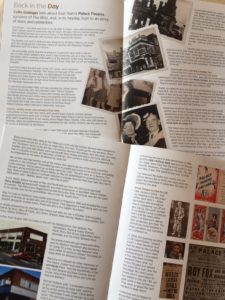
My father worked at East Ham Palace in the 50’s as a stage hand then as a flyman and I remember meeting Jane in the little canteen when she was in the revue…my Dad then became head flyman at the Adelfi in the Strand.
I was born in East Ham in 1948 and remember being taken to a show (probably a pantomime) when I must have been about 5 and was terrified when we entered the theatre at the very top of the ‘gods’ and saw the steepness of the steps down to our seats. Top of the bill was Norman Wisdom and he ended the show by throwing small rubber hammers as far as he could to the amusement of us kids. Some even reached the upper tier. Later, while at Lathom Juniors, someone said there were elephants stabled at in Burges Road within a specially constructed enclosure. We all went along after school to see them, but being schoolboys we were most impressed by the size of their droppings. Later on I remember often shopping in C&A which sold decent clothes at affordable prices.
Hi John,
We came from East Ham, and my father’s name was John Sharp, (born 20 years before you though) — I wondered if we might be related? We lived in St Alban’s Avenue.
Benny Hill started here.